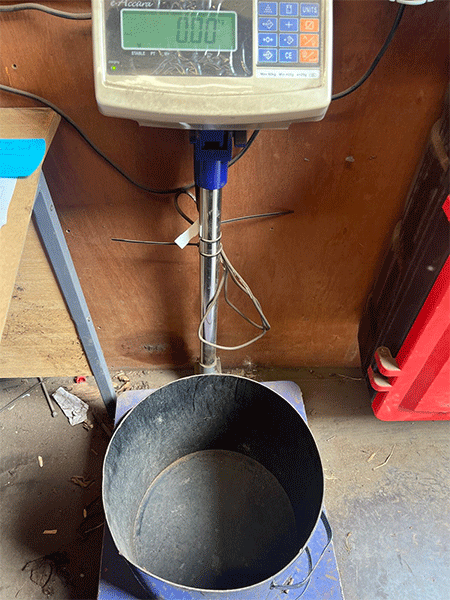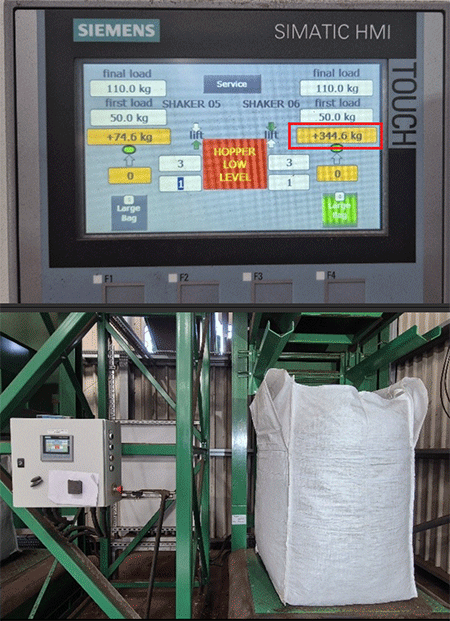
Shopping Cart
0 item(s) - £0.00Bulk Density Measurement
Measuring Composts, Barks and Woodchips Using BS EN 12580: A Step-by-Step Guide
In the horticultural and landscaping industries, accurate measurement of bulk materials like composts, barks and woodchips is essential for quality assurance, regulatory compliance, and customer satisfaction. The BS EN 12580:2022 standard provides a consistent and reliable method for determining the quantity of soil improvers and growing media, including bark and woodchips, in both bulk and packaged forms.
What Is BS EN 12580?
BS EN 12580 is a European standard that outlines procedures for measuring the bulk volume of soil improvers and growing media. It is widely used across the EU and UK to ensure that products like bark mulch, compost, and woodchips are sold in accurate quantities. The standard is particularly important for materials with variable bulk density and particle size.
Why is this methodology important?
When measuring loose materials like barks and composts, it is important to note that materials measured using BS EN 12580 are sold in their loosest and most friable states and not their compacted or consolidated forms.
When a material is often compacted, there is only one sure way of recording a true and repeatable measurement, and that is to measure them in their uncompacted and unconsolidated state.
Often when bagging materials or when large volumes of materials are on lorries, there will be a natural compaction and forced settlement, as well as sometimes in bagged forms a mechanical compaction performed.
Composts especially when sold in bags can be compacted by as much as 50%.
It is important to note that barks, woodchips and composts are always measured in their absolute most uncompacted and most friable states and may take some work breaking the material up to return to this form. When determining the quantity that you require, this needs accounting for and working into your volume requirements.
i.e. to fill a 3000 litre vessel you may require 3600 litre if the material in question has a desired 20% compaction on installation.
This is a European wide standard, with international standards (ISO) equivalents used in other parts of the world. This is a British Trading Standards approved methodology.
Key Steps in Measuring Bark and Woodchips According to BS EN 12580
1. Sample Preparation
-
Representative Sampling: Collect a representative sample of the material, ensuring it reflects the overall composition of the batch.
2. Conditioning the Material
-
Ensure the material is flowable and not excessively wet.
3. Measuring Bulk Volume
-
Use a calibrated standardized measuring 20 Litre cylinder to fill with the material.
-
The cylinder must be filled without compacting the material, allowing it to settle naturally by lightly sprinkling the material into the container.
-
Level the surface without pressing down.
4. Determining Bulk Density
- Record the weight of the contents of the cylinder to determine the bulk density (mass per unit volume).
5. Calculating Quantity
- The volume measured in the cylinder represents the nominal quantity of the product.
-
Once this weight has been determined, you can accurately calculate any volume by understanding the final weight of the total product and the 20 litre box tested sample.
- i.e. to calculate weight per cubic metre you would
- Multiply the 20 litre sample weight by 50
- to determine how many cubic metres are in a load / bag
- Weigh the load / lorry / bag.
- Divide this weight by the figure above and this will give you the cubic metres delivered.
- i.e. to calculate weight per cubic metre you would
Applications and Benefits
- Manufacturers use BS EN 12580 to ensure consistency in packaging and labelling.
- Buyers and regulators rely on it to verify product claims and ensure fair trade.
- Environmental compliance is supported by standardized measurement practices.
- Trading Standards approved.
Limitations and Considerations
- The standard is not suitable for materials sold by dimension (e.g., slabs or blocks).
- It may not be applicable for materials that are too wet or have very large particle sizes.
Conclusion
BS EN 12580 provides a robust framework for measuring composts, bark and woodchips, ensuring transparency and consistency across the supply chain. By following its procedures, stakeholders can improve product quality, enhance customer trust, and meet regulatory standards.
Measuring Composts, Barks and Woodchips Using BS EN 12580: A Step-by-Step Guide
| Step 1: Tare scales with empty 20L calibrated bulk density container. |  |
| Step 2: On the day of filling and for the product selected, gently fill the container by lightly sprinkling material in. Record the filled weight. In this example the recorded weight is 3.44 Kg for the 20 litre measurement. |
 |
| Step 3: Calculate the weight required to measure the desired volume. | Vessel Weight (344 Kg) / Box Test Container Litreage (20L) Multiplied by target litreage for desired fill volume. E.g. In this example; 600L weight is (3.44 / 20) x 600 = 103.2 Kg 1000L weight is (3.44 / 20) * 1000 = 172 Kg 2000L weight is (3.44 / 20) x 2000 = 344 Kg Please Note: The above weights will vary depending on the product and the bulk density |
| Step 4: The machine automatically fills the bag to the pre determined target weight calculated above. The machine will bounce, vibrate and shake to help ensure the material is distributed evenly in the bag and force settlement. |
 |
